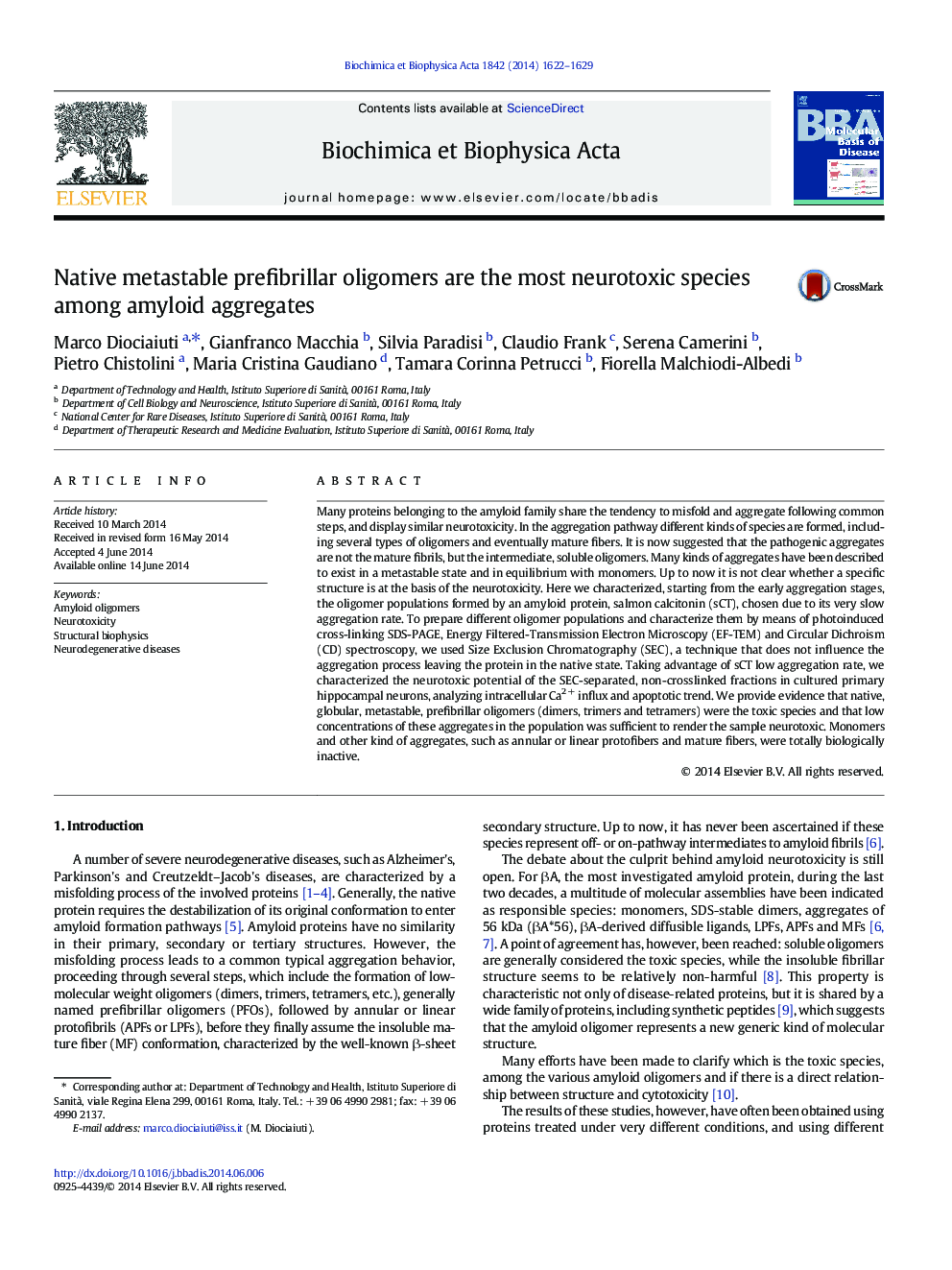| Article ID | Journal | Published Year | Pages | File Type |
|---|---|---|---|---|
| 8260216 | Biochimica et Biophysica Acta (BBA) - Molecular Basis of Disease | 2014 | 8 Pages |
Abstract
Many proteins belonging to the amyloid family share the tendency to misfold and aggregate following common steps, and display similar neurotoxicity. In the aggregation pathway different kinds of species are formed, including several types of oligomers and eventually mature fibers. It is now suggested that the pathogenic aggregates are not the mature fibrils, but the intermediate, soluble oligomers. Many kinds of aggregates have been described to exist in a metastable state and in equilibrium with monomers. Up to now it is not clear whether a specific structure is at the basis of the neurotoxicity. Here we characterized, starting from the early aggregation stages, the oligomer populations formed by an amyloid protein, salmon calcitonin (sCT), chosen due to its very slow aggregation rate. To prepare different oligomer populations and characterize them by means of photoinduced cross-linking SDS-PAGE, Energy Filtered-Transmission Electron Microscopy (EF-TEM) and Circular Dichroism (CD) spectroscopy, we used Size Exclusion Chromatography (SEC), a technique that does not influence the aggregation process leaving the protein in the native state. Taking advantage of sCT low aggregation rate, we characterized the neurotoxic potential of the SEC-separated, non-crosslinked fractions in cultured primary hippocampal neurons, analyzing intracellular Ca2Â + influx and apoptotic trend. We provide evidence that native, globular, metastable, prefibrillar oligomers (dimers, trimers and tetramers) were the toxic species and that low concentrations of these aggregates in the population was sufficient to render the sample neurotoxic. Monomers and other kind of aggregates, such as annular or linear protofibers and mature fibers, were totally biologically inactive.
Related Topics
Life Sciences
Biochemistry, Genetics and Molecular Biology
Ageing
Authors
Marco Diociaiuti, Gianfranco Macchia, Silvia Paradisi, Claudio Frank, Serena Camerini, Pietro Chistolini, Maria Cristina Gaudiano, Tamara Corinna Petrucci, Fiorella Malchiodi-Albedi,
